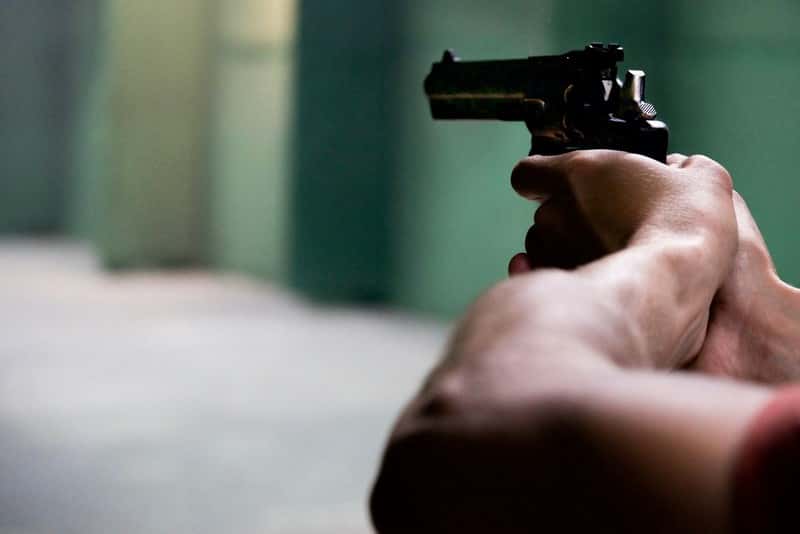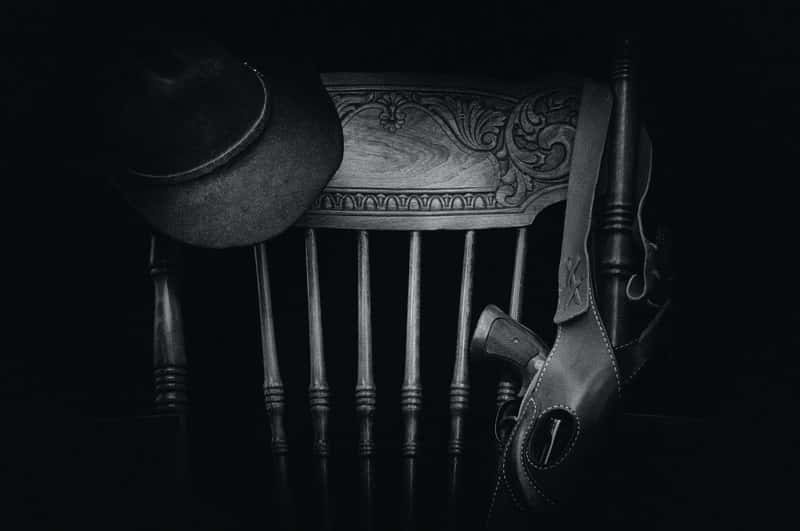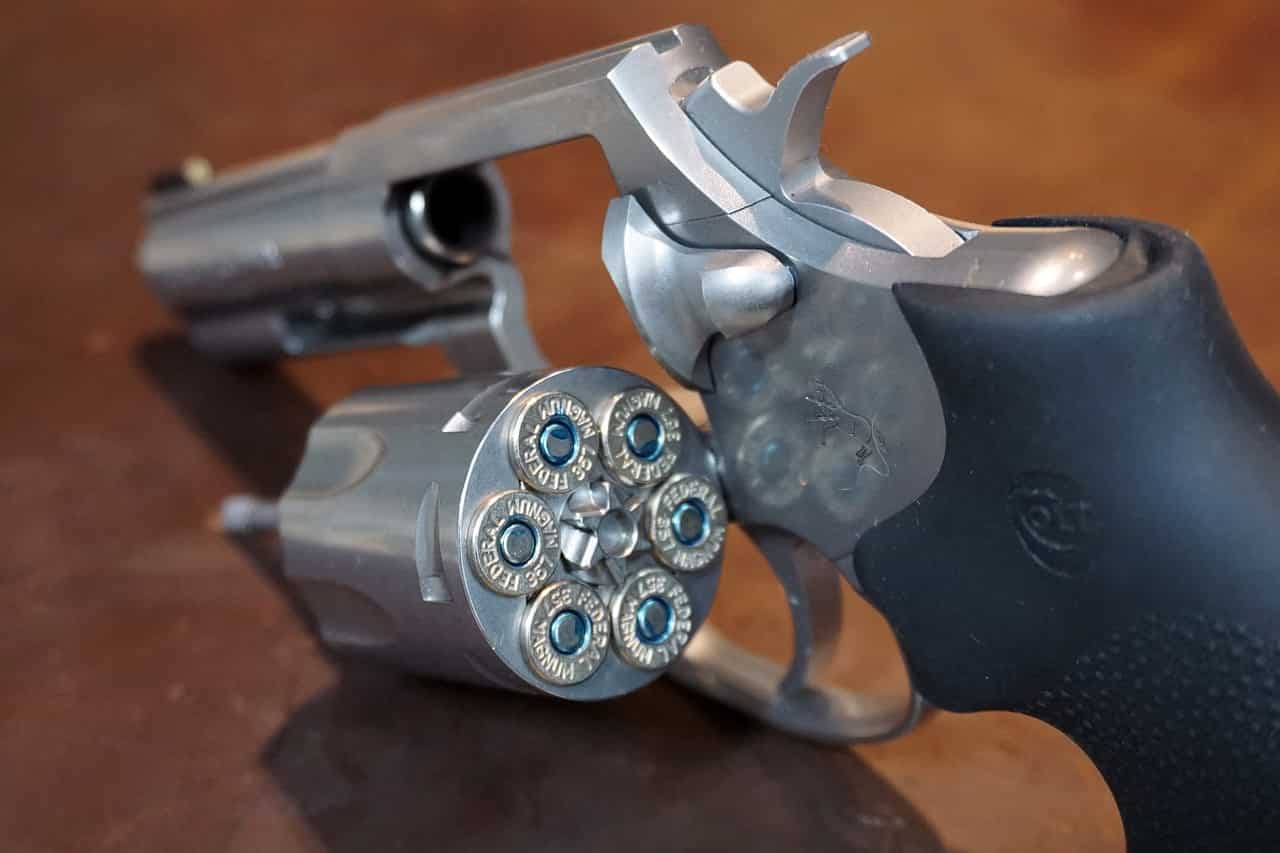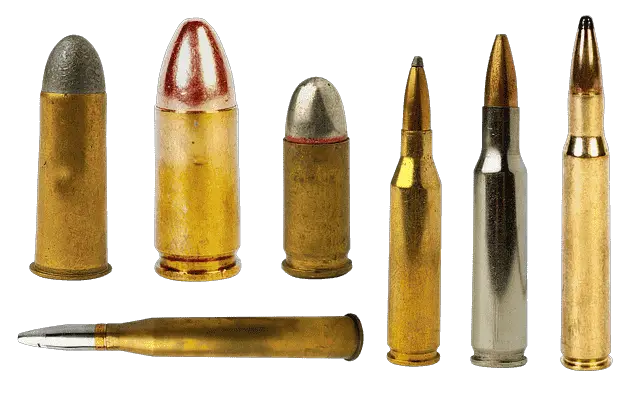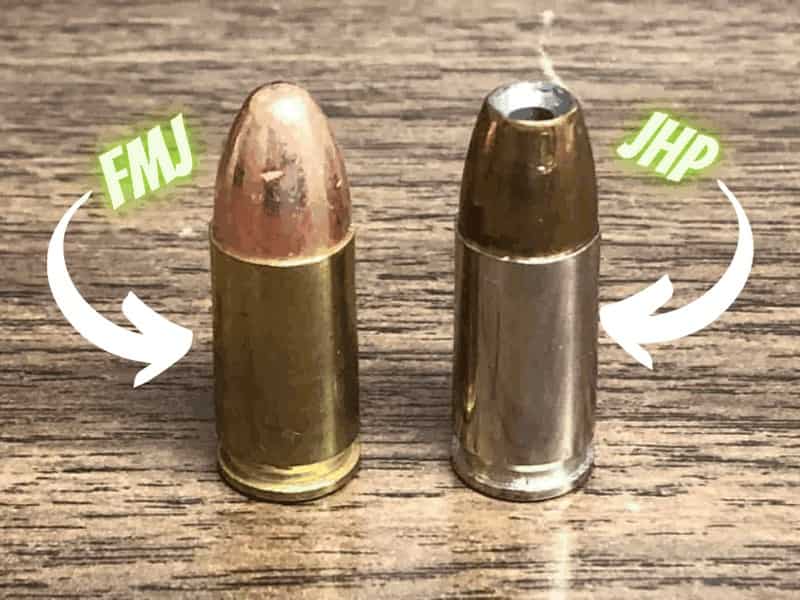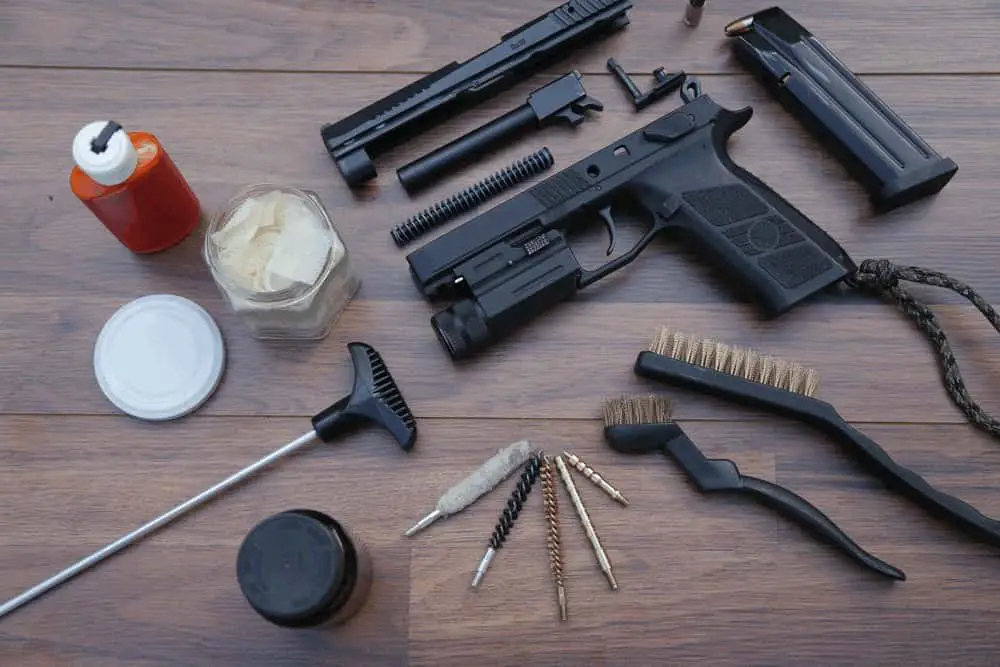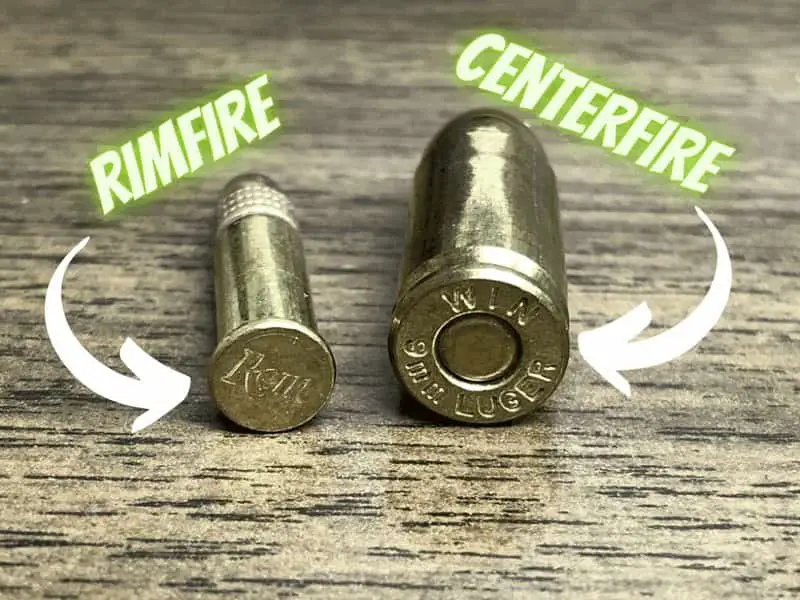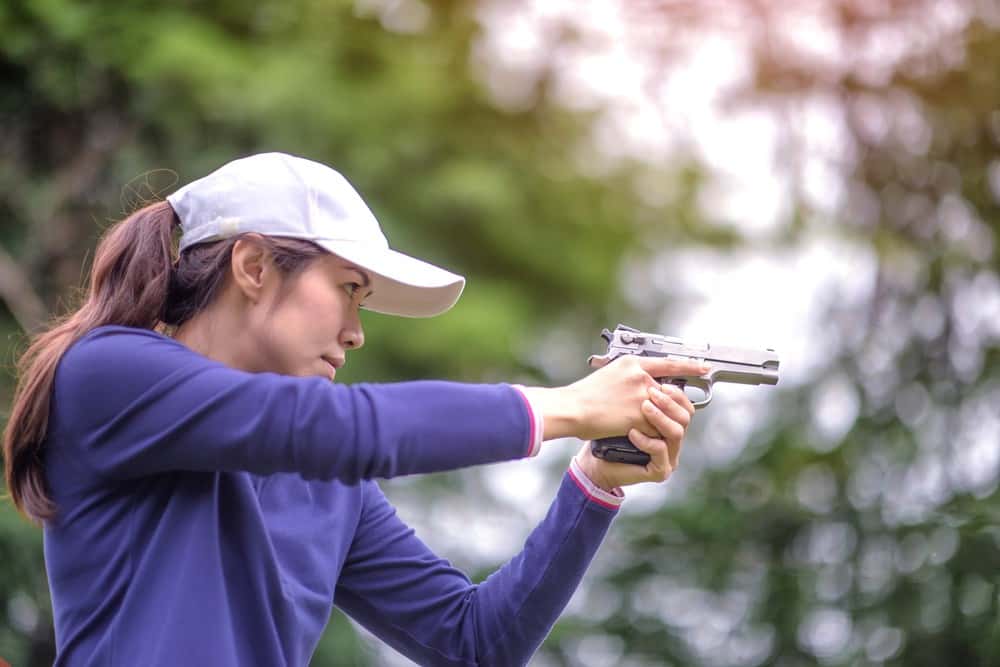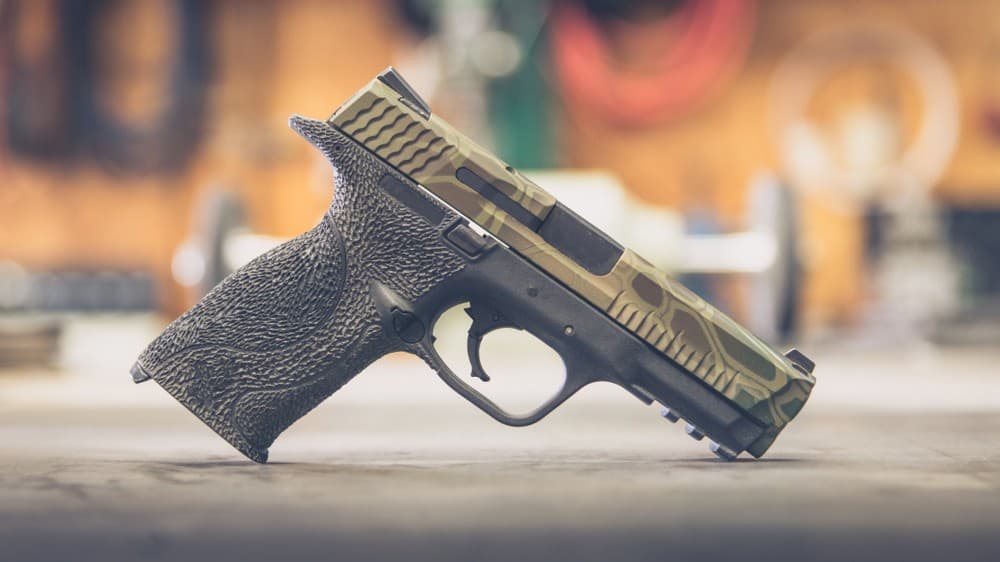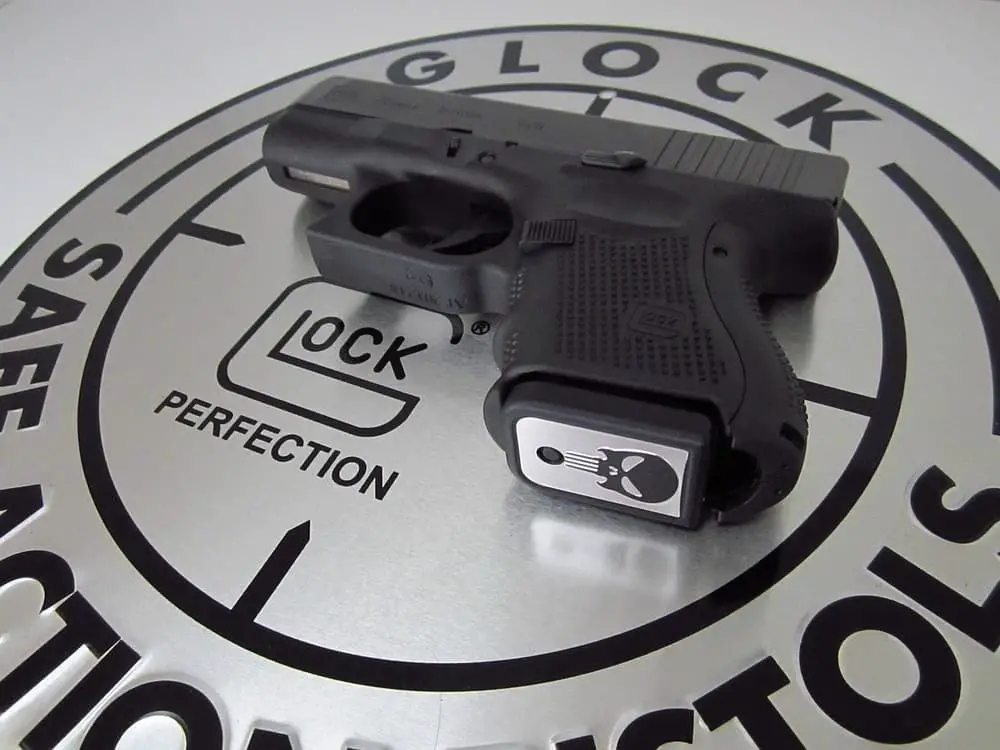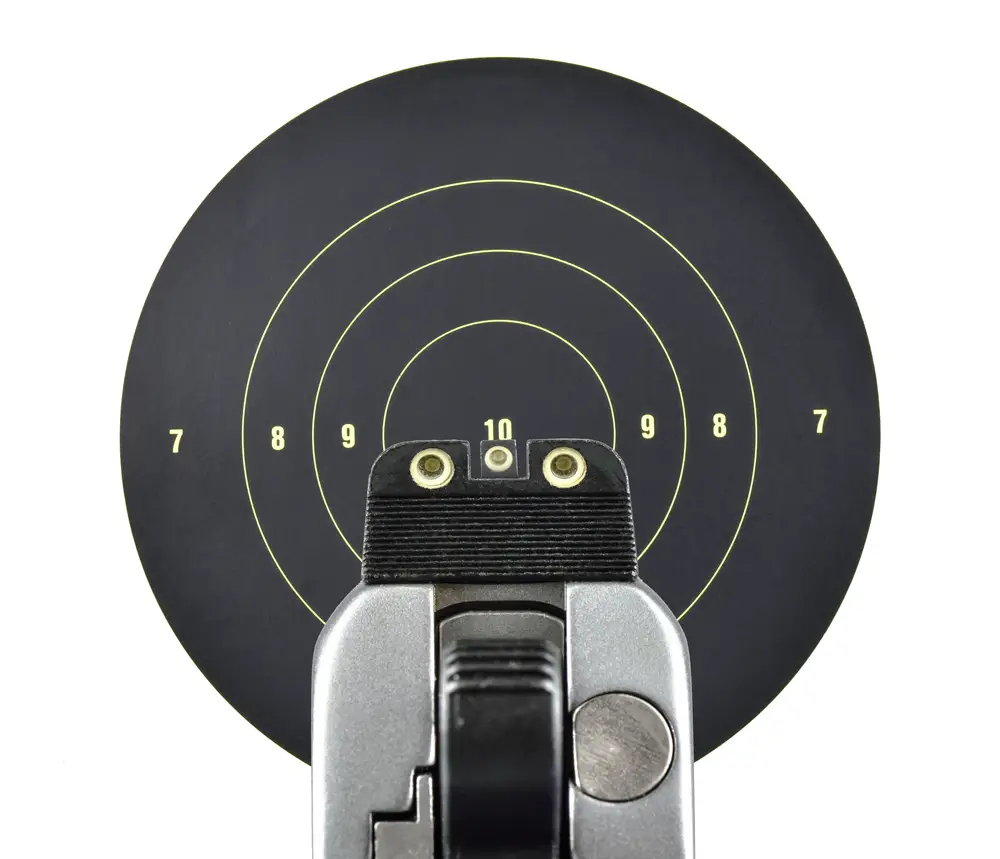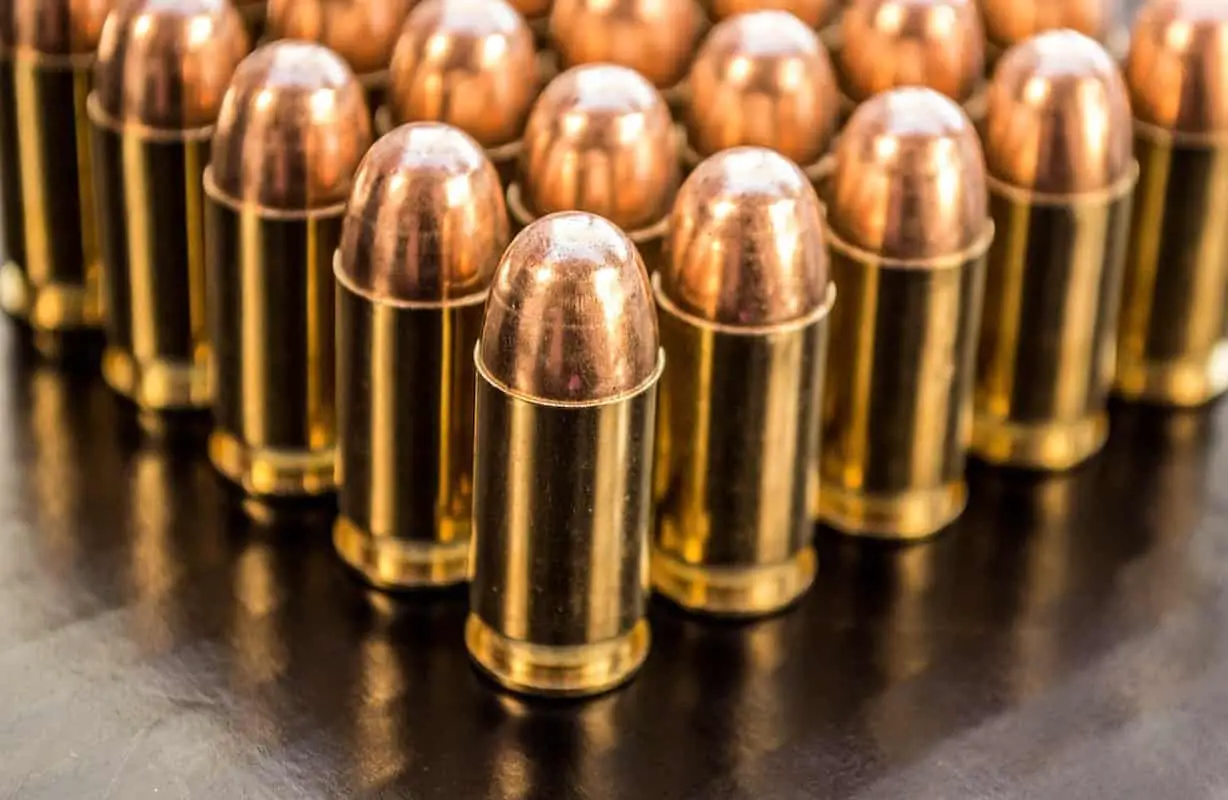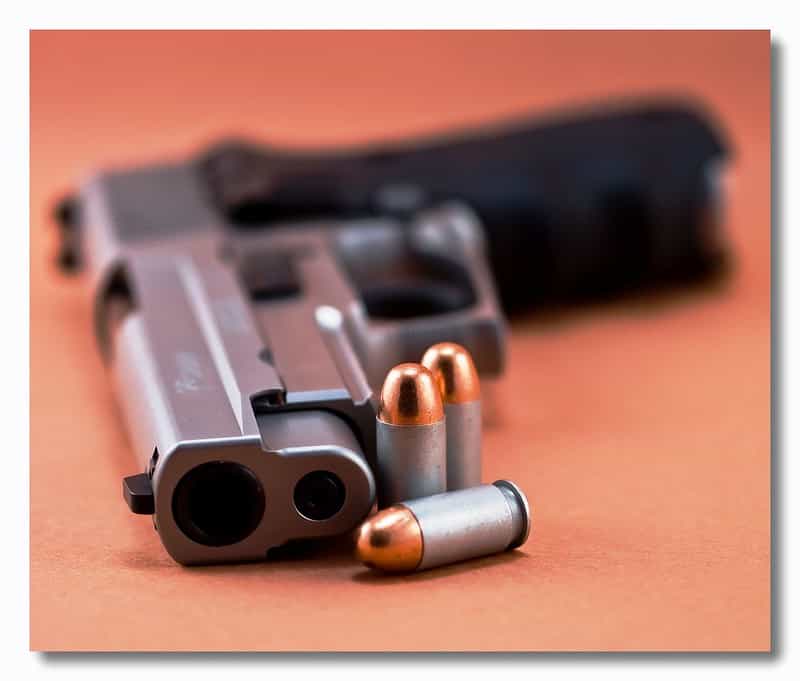To answer the question: “What Is A Centerfire Pistol?”, you must first understand that there are two main types of ammunition:
- Centerfire
- Rimfire
These ammo categorizations are based on where the firing pin hits the back of the bullet to make it fire.
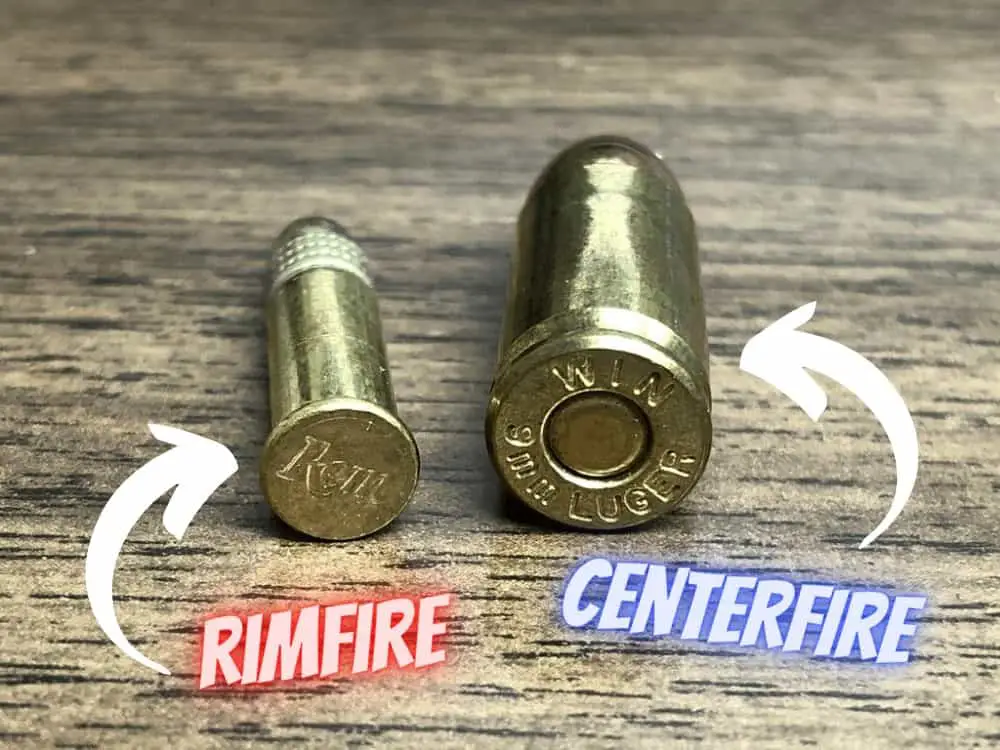
A centerfire pistol is one where the firing pin strikes the center of the bullet instead of the rim. The firing cap is at the center of the bullet, which explains why the firing pin strikes the center of the bullet.
Once the pin hits the middle of the bullet, its propellant ignites and the round is fired.
The rimfire pistol, on the other hand, is where the firing pin strikes the rim of the bullet to ignite its propellant and send it into motion.
Centerfire or Rimfire: Which One to Select
If you are an avid hunter, you have most likely come across both rimfire and centerfire ammunition. To truly determine which kind of ammunition is best for your hunting adventure, you need to look into their designs and operation.
The centerfire wins in both design and function, making it the most popular type in today’s rounds.
The first advantage of the centerfire is how the gunpowder is burned evenly upon firing.
On a rimfire bullet, the powder on one end of the rim may burn faster than on the other; therefore, reducing the amount of powder that can be used in each round.
Since the centerfire is struck in the middle, it is assured that all the powder will ignite and burn evenly.
The second advantage to the centerfire is that it can be made with thicker cartridges.
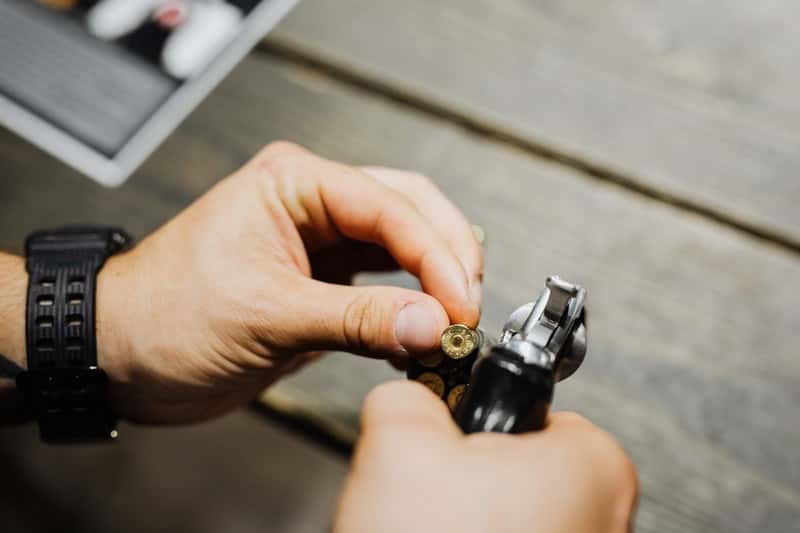
With rimfire, the edge of the cartridge must be struck for it to fire, which weakens the cartridge wall.
For a successful firing, the cartridge wall needs to be thin to ensure the strike ignites the primer bead.
On the other hand, a centerfire round’s primer bead is removable and is the only piece that needs to be struck. This allows designers to make the cartridge walls as thick as possible, allowing more powder and bigger bullets.
The last advantage of the centerfire is that the cartridge is left intact after firing, making it available for reuse.
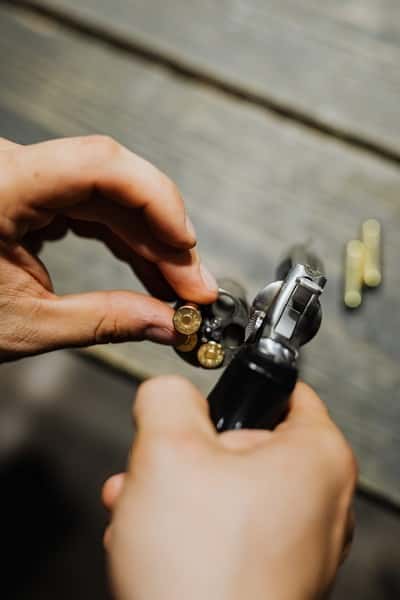
The cartridge of a centerfire round remains in one form because the primer is self-contained and removable. If you have the tools needed to reload your rounds, you can save your cartridges and use them multiple times.
The Centerfire and Rimfire Also Differ In Terms Of Functionality
In addition to design, you must also consider the functionality of the pistol’s rounds, which will determine your user experience.
The first crucial difference between the centerfire and the rimfire is reliability.
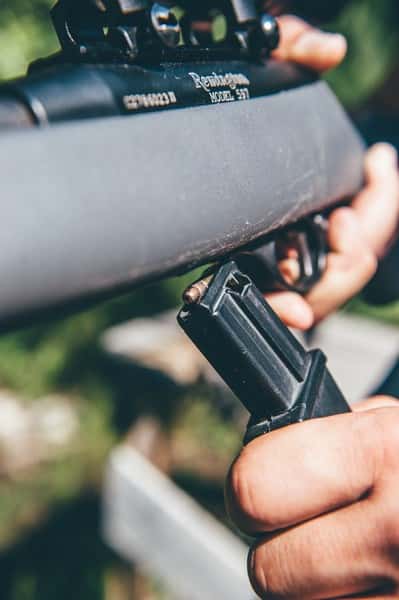
Centerfire rounds have separate self-contained primers built for one function only–making them more reliable and less likely to misfire.
On the other hand, a rimfire rounds’ primer bead is built into its casing, making it more likely to have issues at the manufacturing stage, often leading to misfires.
This difference in reliability is why people use centerfire rounds for the military and self-defense, and rimfire rounds for hunting and practice. Everyone can agree that in both the military and self-defense, the round is required to fire every single time.
A second distinction in functionality is accuracy.
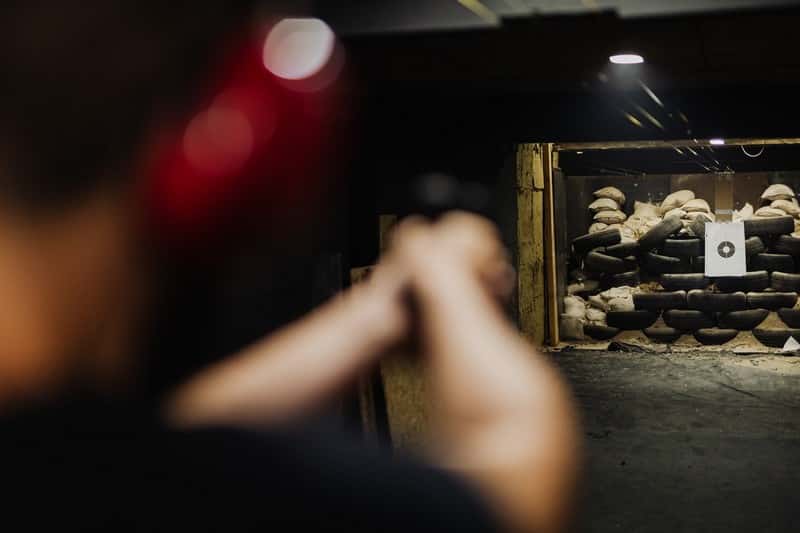
When it comes to accuracy, both rimfire and centerfire have their pros and cons.
Rimfire rounds are generally smaller and carry less powder. This means the recoil from a rimfire will be less than a centerfire, and less recoil can help with the following:
- the user may flinch less as the level of recoil they anticipate is reduced
- recoil is also known to make the second and third shots less accurate because the explosion will pull the barrel off target, causing the user to have to realign the pistol for each shot.
Due to reduced recoil, the rimfire may be deemed more accurate. However, the lack of recoil may be due to reduced power and a lighter bullet, making long-distance shots more difficult.
Due to reduced powder and therefore less propulsion, the round will travel slower and drop more over longer distances.
Lighter bullets can also be affected by crosswinds. Firing such a shot over 100 yards will show the winds clearly taking the bullet up to 6 inches from its initial path. Therefore, for longer distances, the best round is the centerfire.
The last element of functionality is how the round type affects the design of the gun.
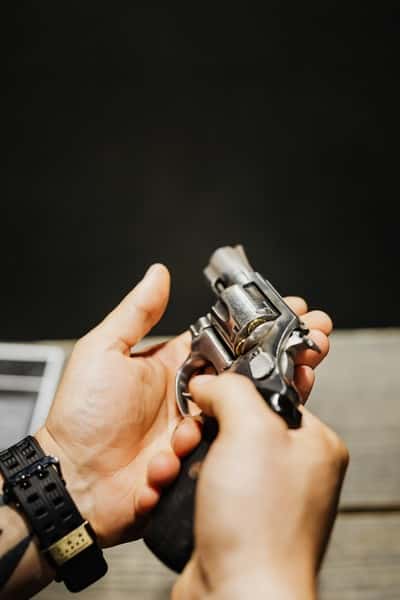
On a single-shot gun, there is no difference in reloading. However, on semi-automatic rifles, there is a significant difference arising from the kind of round used. Centerfire rifles use the force generated by escaping gases upon igniting the powder to reload the round.
Rimfire pistols, on the other hand, rely on the small amount of recoil generated by the round to reload, making their operation less complex. When it comes to guns, simplicity is often the better option.
Differences between the Centerfire and Rimfire Cartridge for Hunting
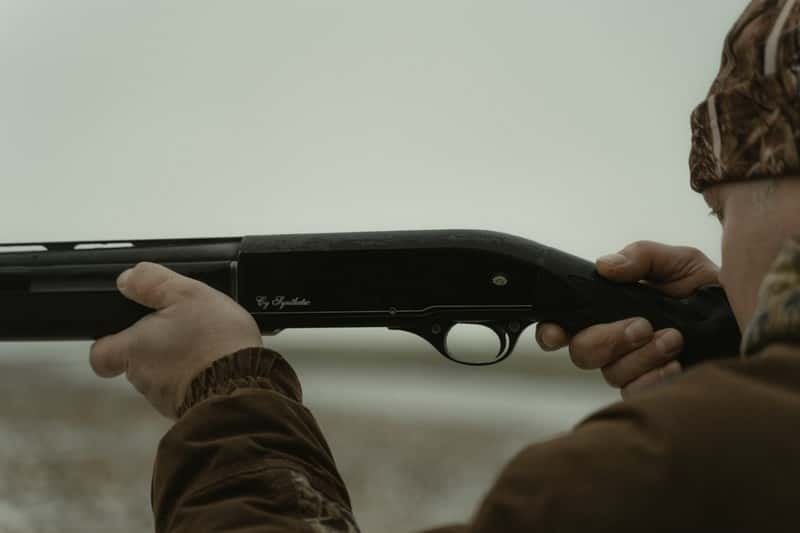
If you are hunting small game, rimfire ammunition may be the best option. For example, the rimfire .22 rounds are inexpensive and have less recoil, making them good enough for hunting rabbits and squirrels.
If you are hunting larger game, you need to consider your proficiency as the rimfire rounds will greatly reduce your chances of success. A well-placed shot with a rimfire can take down a larger animal, but to increase your chances of success, save the rimfire rounds for smaller animals.
The other factor to consider is the bullet quality. Rimfire bullets are made with thinner, weaker metals so that they fracture and spread upon impact.
This will work well for smaller game, but not for the thick hides of larger animals.
Although there are centerfire rounds for small game, they are more expensive. Instead, use centerfire rounds for larger game, where the power, speed, and accuracy will significantly boost your chances of taking down an animal.
Centerfire Vs. Rimfire for concealed carry
Centerfire is generally recommended for concealed carry because larger rounds mean more stopping power. It’s often said that a .380 is the smallest caliber that you should even think about carrying for self defense.
However, you have to choose a gun you will carry consistently and have the most accurate aim with.
If the only round you can handle is a .22 rimfire, then choose that gun and carry it every day (Just remember to find proper defense ammo).
Personally, I carry the Ruger LCP, which is chambered in .380. Since I have to tuck in my shirt at work, I can easily slip this little gun in my front pocket.
Have you ever thought about buying ammo online?
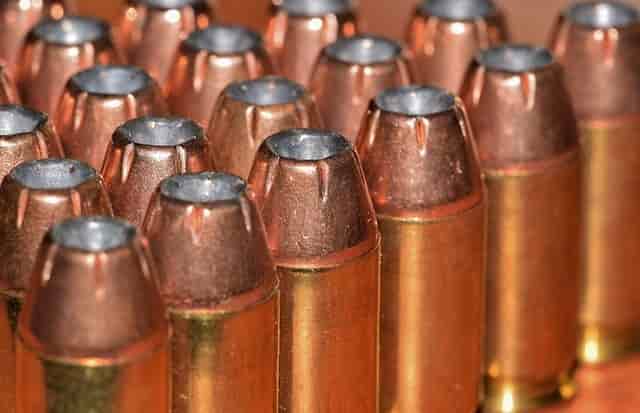
I’m telling you it’s so easy with Lucky Gunner! The ammo shown on their site is guaranteed to be in stock and will ship fast. I heartily endorse Lucky Gunner and so do their many customers.
“Okay, so far I’ve dealt twice with LuckyGunner, and all I can say is, I LOVE YOUR COMPANY!!!!
Imagine: only items in stock are advertised. Who’da thunk, eh? The more highly advertised ones – Cheaper Than Dirt, Cabela’s, et. al. – will put you on backorder forever and a day. But LuckyGunner – I ordered 500 shells of .45 ACP (hard to get in this “shortage”) – and there it was at my address. No backorders, no bull. Business as it should be.
Yes, I’m telling my friends! I’m constantly writing down your addy on bits of paper (and running out of the latter), spreading the joyous news, “No backorders! No bull! Try LuckyGunner.com, you won’t be sorry!” Thank you for being there for an ammo-starved public. And, thanks for the SUPERB customer service.”
— Walter J., Silverdale, WA —


Jason Huskey
Owner of CCWClasses.net
Jason Huskey is a family man with three kids and a wonderful wife. He’s always starting new hobbies, but his true passion lies in shooting sports. Jason has been a CCW license holder for over 10 years and carries every day. In addition to firearms, he also enjoys playing guitar and writing songs. He tries to live by the Christian values he believes in.
More things you might enjoy…
Can a 38 Special Shoot 357 Rounds?
Image by MikeGunner from Pixabay I’ve long since discovered that very few activities give me the same thrill and sense of security as firing a gun. As a gun owner and enthusiast, I’ve always been curious about which guns can shoot which kinds of ammunition. I have a Derringer five-shot revolver that uses .22 rounds.…
Who Makes the Most Popular Brands of Ammo
If you are here to figure out who makes Herter’s ammo just look below the following table for a more thorough answer. If you are looking for a specific type of ammo, then you need to start by figuring out who makes it. There are lots of options for ammunition and each type of bullet…
What Does Full Metal Jacket Mean?
If you have heard the term full metal jacket, then you might be wondering what this means. I know that growing up, I heard this term a lot. I dismissed it as some sort of saying or cliche. Eventually, I decided that I needed to figure out what people meant when they use this term.…
How Often Should You Clean Your Gun?
After purchasing a firearm, you might wonder how often you should clean your gun. The truth is that it largely depends on how often you use it and where you live. Keep reading to learn more. How Often Should You Clean Your Gun? The short answer: do a light cleaning after every shooting session and…
What Is The Main Difference Between Centerfire And Rimfire Ammunition?
Rimfire vs Centerfire Everyone has to start somewhere. If you’re new to guns, learning the difference between rimfire and centerfire ammunition is important. Let me backtrack a moment. The first time I went out on the gun range, I had zero idea that there were different types of ammo for different types of weapons. All I knew…
Continue Reading What Is The Main Difference Between Centerfire And Rimfire Ammunition?
How Should You Hold a Handgun for Maximum Accuracy?
Whether it’s for sport or you find yourself in a defensive situation where you need to use a handgun, how you hold it will significantly affect your accuracy. Developing your handgun techniques will help you become a better shot and keep you safe. Read on to learn the answer to the question: How should you…
Continue Reading How Should You Hold a Handgun for Maximum Accuracy?
What Is Stippling On A Gun?
Hey, would you like a more firm grip on your gun? Would that help you shoot better? Well that is what stippling is for. Stippling is a modification to the grip that makes it, well, more grippy. It is done by sanding off the original finish and then using a hot soldering iron to make…
Is It Bad To Dry Fire A Glock?
There are loads of myths and assumptions surrounding handguns. If you grew up around guns, you probably heard some of these myths. Today, we will answer the question: Is it bad to dry fire a Glock. The Quick Answer Dry firing modern centerfire guns is completely fine (this includes most Glocks). The firing pin does…
What Is The Sight Picture?
When you first became interested in shooting you probably heard the terms sight picture and sight alignment being thrown around. Most people tend to use the two terms interchangeably; however, they do not mean the same thing. In this guide, I will make a clear distinction between sight picture and sight alignment. To master any new trade, you must…
What is Ball Ammo
When you hear the term “ball ammo” you may be picturing an actual ball. While the term did originate from ball shaped ammo, that’s not what it means today. Most ball ammo today is cylindrical in shape. It will have a lead core coated with copper. Keep reading to learn all about the history and…
What is ACP Ammo?
So much of our gun culture today was influenced or actually designed by a legend named John Browning. To understand where ACP Ammo came from we have to understand a little bit about this man. I’ll go into more detail about John Browning in a second but let’s answer the main question first, “What is…
